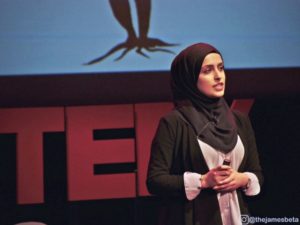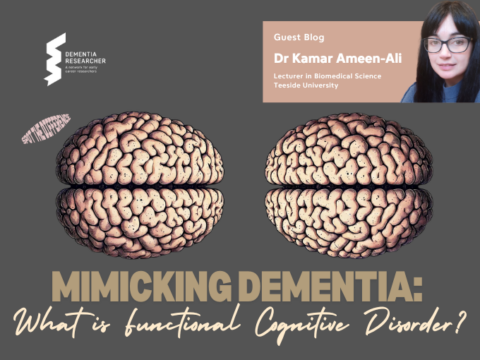This is the fourth of four guest blogs from Early Career Researchers who observed the recent ARUK Grant Review Board – Take Four by Dr Nazira Albargothy
The ARUK grant selection process through the eye of an early-career observer
As an early-career research fellow, the chance to observe an Alzheimer’s Research UK grant review board (GRB) meeting was the perfect opportunity to gain first-hand knowledge of what is required to make a successful grant application. Since there are only a limited number of seats available for early-career observers, I hope that this blog serves as an informative guide about the ARUK grant selection process.
What type of ARUK grants are available?
ARUK provides a wide range of grant schemes with the goal to: advance our understanding of Alzheimer’s disease and other dementias, elucidate the mechanisms underlying these diseases, improve diagnosis/detection, discover new therapeutic targets, and develop disease modifying treatments. On day one of the GRB meeting (the day I attended), only applications for the first three grant schemes were discussed.
- Senior Research Fellowship
- Junior Research Fellowship
- Pilot Projects
- Clinical Research Fellowship
- Dementia Consortium Grant
- Equipment Grant
- Extension Grant
- Global Clinical Trials Fund
- Inter-disciplinary Research Grant
- Major Projects Grant
- Network Accelerate Scheme
- Network Cooperation Scheme
- Network Support Scheme
- PhD Scholarships
- Preparatory Clinical Research Fellowship
- Sabbatical/Secondment Grant
- Scientific Conference Grant
- Target Validation Pathfinder Grant
- Travelling Research Fellowships
How is a successful application selected and who is involved in the grant review process?
When an application is created by the lead applicant and the relevant signatories are obtained by the co-applicants and head of department, it is eventually submitted to ARUK where it goes through a number of rigorous processes before potentially being discussed in a GRB meeting. The proposals are first reviewed by distinct advisory groups with an expertise in the relevant research area. Those that fulfil the eligibility criteria and fall under the charity’s research remit are further assessed by external dementia researchers before being sent off for discussion in a GRB meeting.
The GRB panel is made up of some of the world’s leading dementia research experts and is chaired by Professor Tara Spires-Jones from the University of Edinburgh. Board members meet up twice a year to discuss research proposals submitted within the past six months. Grants are awarded on scientific merit in light of ARUK’s scientific strategy and on the basis of competition.
At the GRB meeting, two board members present the grant proposals to the panel and base their assessment on the quality of the application/applicant and the strength of the dementia research environment.
Assessment criteria for the grant proposal:
- Is the proposal clear and well structured?
- Are the proposed scientific experiments novel and of high quality?
- Are the goals realistic in the given time-scale?
- Does the work represent value for money?
Assessment criteria for the applicant:
- Does the applicant have a recent first-author publication? (If not, were there any circumstances, e.g. sick/maternity leave?).
- Does the applicant have sufficient expertise in performing the proposed experiments and if not, are they collaborating with the correct groups in order to achieve them?
- Does the applicant show the potential to lead their own lab and become a principle investigator? (If applying for a senior research fellowship).
Based on the above criteria and other guidelines for best practice in peer review provided by the Medical Research Charities, the board members score the application between 1 and 5, with a score of 1 representing an excellent grant. Board members are encouraged to select a value above or below 2.5 to create an obvious divide between a successful and an unsuccessful grant proposal. Any grant proposals that receive an overall score beyond 2.5 are not short-listed. Applicants whose proposal receives an overall score below 2.5 are invited for interview and this is the final step in the selection process.
A key observation I made during the GRB meeting was the strict conflict of interest policy in action; this policy ensures the selection process is as objective as possible. Board members are not permitted to review an application from their institution or one that is made by a collaborator of theirs.
This experience was immensely beneficial and it was comforting to know that applicant’s whose grant proposal is unsuccessful, still receive constructive criticism to develop their ideas and experimental design, and they are sometimes encouraged to re-submit their application. And for those whose grant proposal is accepted, they can celebrate with confidence knowing that their work will transform the future of Alzheimer’s disease with the patient’s best interest at heart.
Author
Dr Nazira Albargothy is a Neuroscience Researcher, with a passion to defeat Alzheimer’s disease. Nazira uses state-of-the art technologies as part of her research include: light microscopy, light-sheet microscopy, scanning electron microscopy, transmission electron microscopy and gatan-3-view. See Nazira in action for the 3 minute thesis competition – https://youtu.be/MlX5CpbaBYI
 Thank you to Alzheimer’s Research UK for providing the opportunity. To find out more about potential funding from ARUK visit their website.
Thank you to Alzheimer’s Research UK for providing the opportunity. To find out more about potential funding from ARUK visit their website.

 Print This Post
Print This Post





